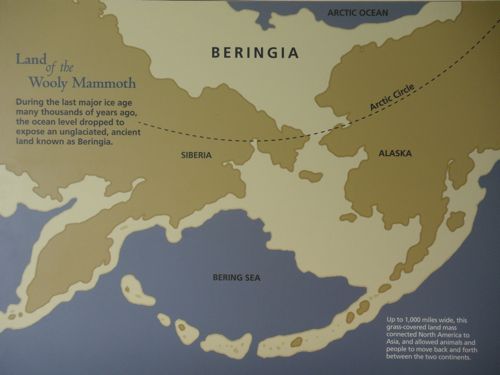
This is it, the last night before we fly out to the remote archaeological dig site. We are flying out about 30 miles northeast of the village of Kivalina, on the coast of northwest Alaska between Point Hope and Kotzebue. It's been a nice stay in Kotzebue, but we are ready to go into the field. To celebrate tonight we had a swim in the Chukchi Sea. I noticed we all had bruises on our shoulders from the shotguns we used in bear training. Swimming in the ocean north of the Arctic Circle is COLD! Afterward we raced for hot tea and a shower in the bunkhouse.
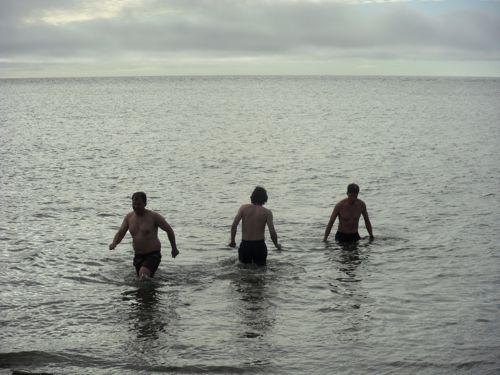
Tomorrow morning we will head to the airport and begin our final day of travel to the site. I can now travel with my Leatherman tool on my belt - on commercial flights like Alaska Airlines you are not allowed to have a knife while flying. But on a small Cessna like we'll fly on tomorrow, they don't do security screenings.
We'll fly in the Cessna to the Red Dog mine and then from there we'll be flown out in pairs to the dig site in a small red helicopter flown by Stan Hermen. Hermen lives in Oregon much of the year but he comes up to fly scientists around during good flying weather. He's flown for so long that he now gets to choose who he flies and loves to fly with researchers doing archaeology, biology or or other science. He arrived in Kotzebue yesterday right after another mission. On that trip, they were catching birds which fly from Alaska all the way to New Zealand without stopping. Stan flew the scientists to locations where they could catch the birds, and then surgically insert a small tracking device so they could later monitor their migrations to New Zealand.
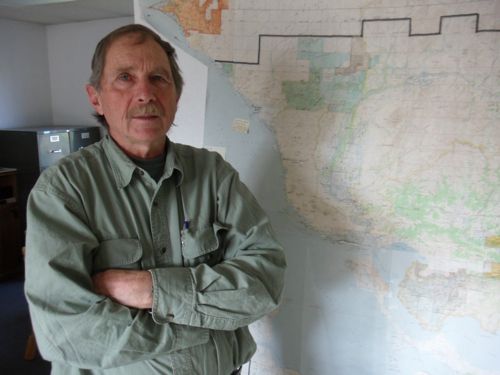
Bill and Jeff, the lead archaeologists, came through today just briefly on their way to the field. Later Courtney, Roger and Steve came through as well. They are in camp tonight with Stan and the little red helicopter, digging the latrine and setting up the cook tent. We hope to see them at Red Dog tomorrow by around 11 a.m., and to arrive in camp a few hours after that. Perhaps tomorrow afternoon we'll be up at the dig site, finally doing some archaeology!
I spent most of today on the phone with a tech guy in California. I haven't been able to make my MacBook send emails through the satellite phone and this guy was trying to help. No luck so far. If I can't get it to work, I won't be able to send emails or pictures from camp - only audio entries. I hope I can work it out so I can report live from the field and answer your questions!
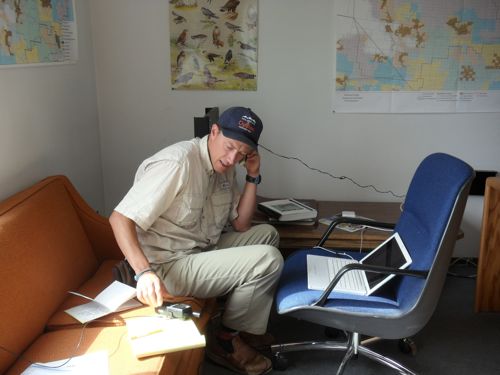
I took a break to sneak over to the Northwest Arctic Heritage Center where they have a wonderful interpretive center. There were life-size models of a caribou swimming, whale-blubber-drying rack, salmon-drying rack, a real wooden kayak frame and traditional whale harpoon and many other wonderful native crafts. Unfortunately the tech problems took me away too soon. I hope you can go visit Kotzebue's heritage center yourself some day!
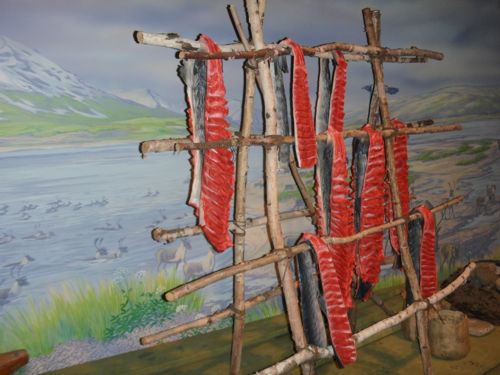
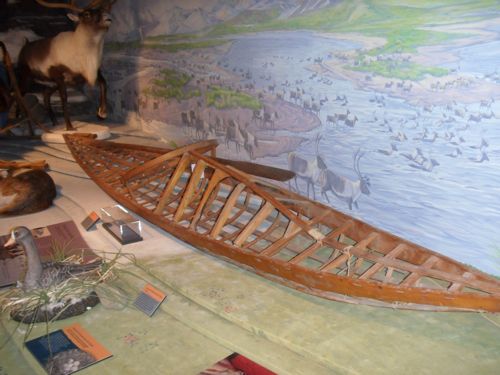
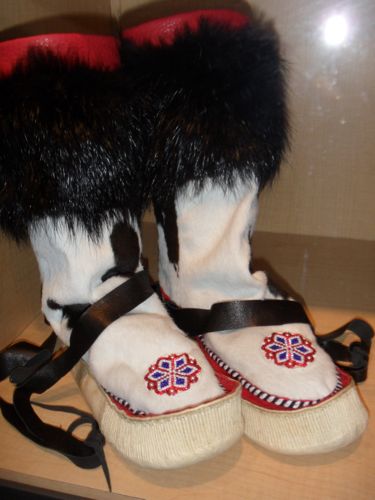
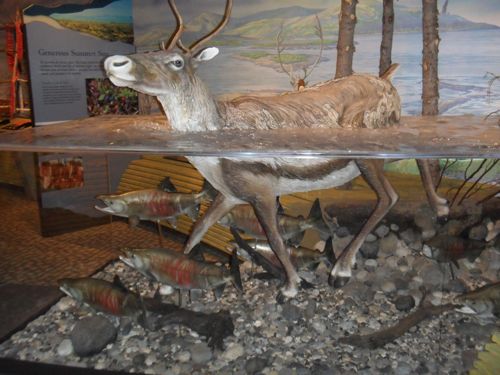
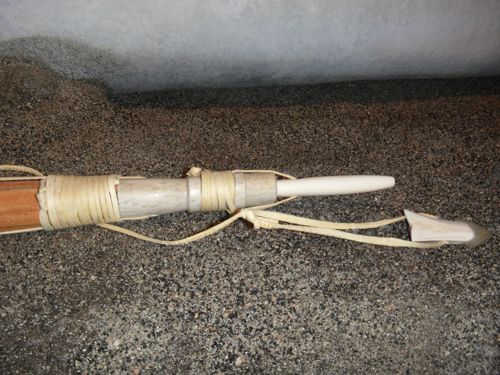


Comments